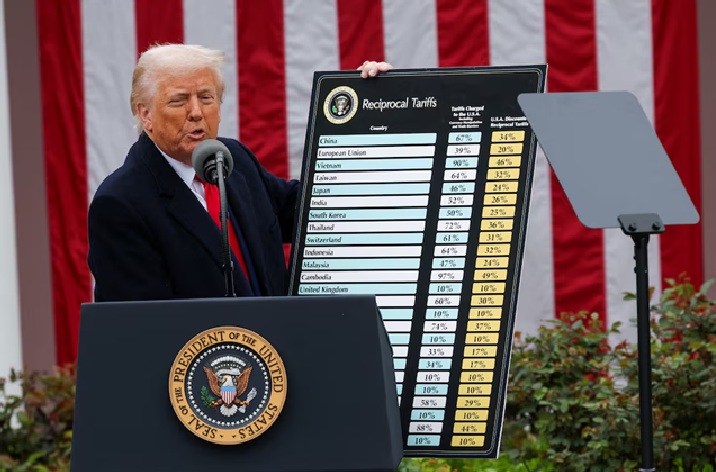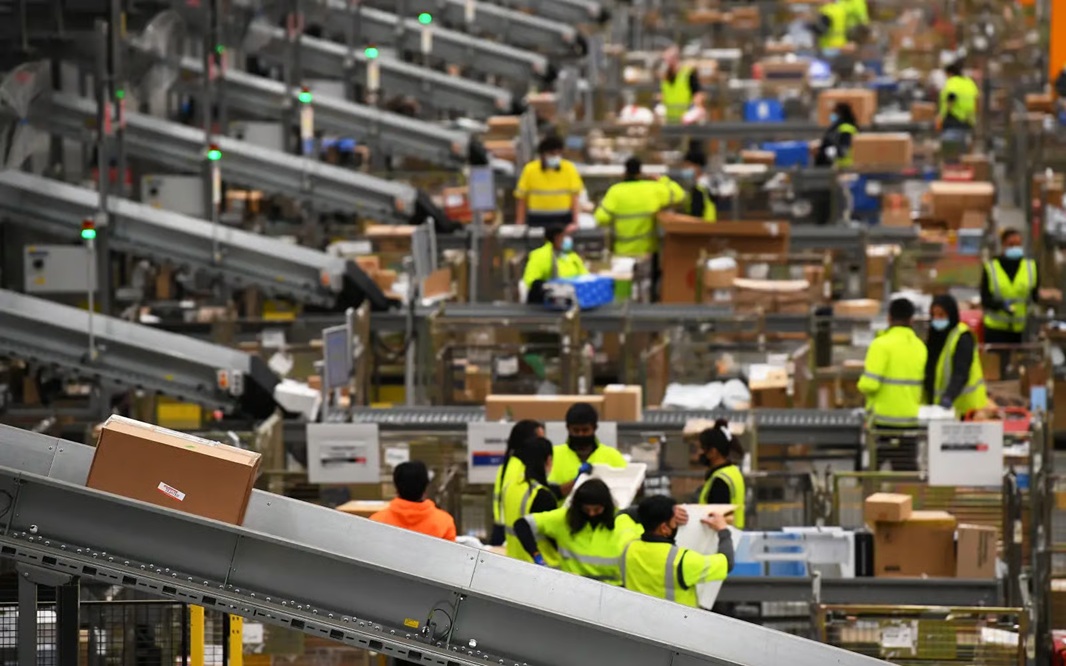WASHINGTON, – President Donald Trump announced on Wednesday that his administration would impose a 10% baseline tariff on all imports to the U.S., alongside higher duties on dozens of other countries, including some of America’s largest trading partners. The move escalates a trade war that reignited upon his return to the White House.
The sweeping tariffs erect new barriers around the world’s largest consumer economy, marking a sharp reversal from decades of trade liberalisation that have shaped the global order. Trading partners are expected to retaliate with countermeasures, potentially leading to significantly higher prices on consumer goods ranging from bicycles to wine.
Following the announcement, U.S. stock futures plunged amid ongoing market volatility, as investors speculated on the potential impact of the tariffs on the global economy, inflation, and corporate earnings. U.S. markets have already shed nearly $5 trillion in value since February.
“It’s our declaration of independence,” Trump proclaimed during a White House Rose Garden event.
Under the new measures, Chinese imports will be subject to a 34% tariff—on top of the 20% levy previously imposed. Even close U.S. allies have not been exempted, with the European Union now facing a 20% tariff.
A White House official, speaking on condition of anonymity, stated that the higher penalties will take effect on April 9 and will impact approximately 60 countries. Meanwhile, the 10% baseline tariff is set to take effect this Saturday.
Trump defended the tariffs as “reciprocal” measures, arguing that they counteract duties and non-tariff barriers placed on U.S. goods by other nations.
“In many cases, the friend is worse than the foe in terms of trade,” he remarked.
Canada and Mexico, the two largest U.S. trading partners, are already subject to 25% tariffs on many goods and will not face additional levies under this latest announcement.
Certain goods will be exempt from the reciprocal tariffs, including copper, pharmaceuticals, semiconductors, lumber, gold, energy, and “specific minerals not available in the United States,” according to a White House fact sheet.
Following his remarks, Trump signed an executive order closing a trade loophole that allowed duty-free shipping of low-value packages (valued at $800 or less) from China under the “de minimis” rule. The order, which also covers goods from Hong Kong, will take effect on May 2.
U.S. anti-narcotics officials have pointed to Chinese chemical manufacturers as major suppliers of raw materials used by Mexican cartels to produce deadly drugs. They argue that traffickers have exploited the de minimis rule to route such chemicals through the United States. China has consistently denied any involvement.
Trump is also considering additional tariffs targeting semiconductors, pharmaceuticals, and possibly critical minerals, according to administration officials.
Financial markets and businesses that have long relied on stable trading arrangements have been rattled by Trump’s latest wave of penalties. Earlier in the day, the administration confirmed that a separate set of tariffs on auto imports—announced by Trump last week—will take effect on Thursday.
Trump has already imposed 20% duties on all imports from China, as well as 25% tariffs on steel and aluminium, extending them to nearly $150 billion worth of downstream products.
His advisers argue that these tariffs will help restore strategically vital manufacturing capabilities to the United States. However, outside economists have warned that the measures could slow global economic growth, increase the risk of recession, and raise annual living costs for the average U.S. household by thousands of dollars.
Concerns over tariffs have already contributed to a slowdown in global manufacturing activity, while also accelerating purchases of automobiles and other imported goods as consumers rush to buy before prices rise further.




